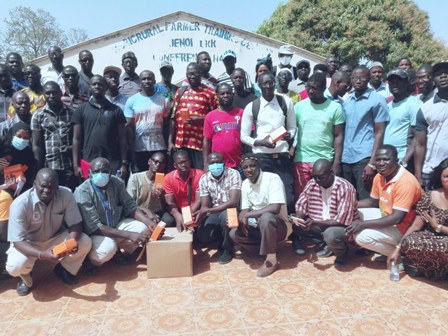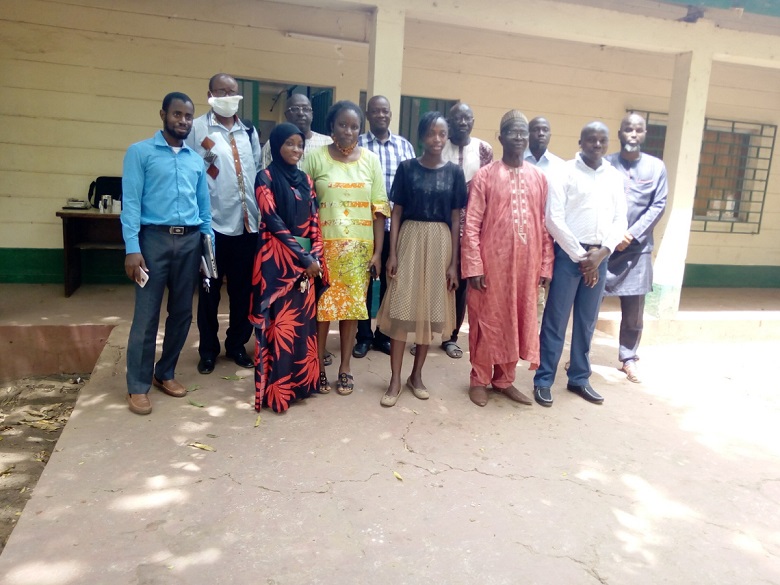The need to satisfy the increased demand for animal products requires an intensive multifaceted approach to the production and subsequent marketing of livestock. Both have to move concurrently to balance market forces of supply and demand for sustainable utilization of livestock and their related products.
The strategy interventions for the promotion and transformation of the sector as articulated in the agency’s strategic plan (2020-2024) requires engaging all relevant stakeholders both in the public and private sectors. The private sector being a very important and relevant stakeholder can play a vital role in enhancing livestock marketing through engaging value chain actors particularly in the area of value addition and promotion of export-oriented marketing strategies.
Strategic Priorities
The strategic plan is anchored on the following five strategic priorities:
The main goals of improving livestock marketing infrastructures are to have modern structures with sanitary and zoo-sanitary facilities that meet the national food safety standards. These will promote and enhance livestock marketing; locally, sub-regionally and internationally. These modern structures will be required to meet international standards in terms of regulations and operations. The short and medium-term priorities would be to provide and improve the existing marketing facilities in order to respond to the immediate demands of livestock commercialization and marketing.
The expected outcomes under this strategic priority are many folds and include but not limited to;
Improved hygienic conditions of the facilities;
Value-added livestock products;
Facilitated marketing environment;
Protected and well-managed livestock marketing environment;
Improved livestock production and marketing security; and
Enforced policies and regulations.
To achieve the above-mentioned outcomes, the following activities will be pursued;
Establishment of an inventory of abattoirs conditions and locations in the country;
Assessment of existing markets and marketing infrastructures;
Determination of users and beneficiaries of the facilities;
Development of a roadmap for complete modernization of livestock marketing infrastructures; and
Construction and rehabilitation of identified structures; markets, abattoirs, slaughterhouses, meat stalls, processing facilities (poultry, piggery, small ruminants etc.).
The main goal of enhancing livestock value chains is to delineate the major stakeholders in livestock production and marketing activities and to enhance value addition of livestock and livestock products. It will also help determine the roles and responsibilities of each actor in the value chain whereby the synergies and complementarities will be built to support and reinforce operations for a better and profitable marketing system.
The expected outcomes of this strategic priority are:
Reinforced market-led oriented livestock production and marketing system;
Enhanced livestock value addition, processing and storage;
Assured product Quality meeting required standards and regulations; and
Guaranteed consumer satisfaction, safety and security of livestock products.
Aimed at realizing the aforementioned outcomes, the corresponding activities will be implemented:
Continuous capacity building for stakeholders/value chain actors;
Development and promotion of local livestock products for marketing;
Establishment and or revitalizing farmer cooperatives for enhanced livestock product marketing;
Establishment of livestock commodity-based marketing groups;
Strengthening market research and information systems; and
Provision of a processing plant for meat and poultry.
The main goal of this priority area is to facilitate easy access to financial resources by the value chain actors in livestock commercialization and marketing. This will enable them to access the needed funds for the running and operations of their enterprises in a more effective and efficient manner. In a business start-up, the initial working capital is a prerequisite and fundamental to entrepreneurs especially those into livestock marketing.
The expected outcomes of this strategic priority are;
Smooth and faster implementation of planned marketing activities;
Efficient production and distribution of livestock and livestock products to target markets and consumers;
Reduction of losses to livestock products during marketing;
Business start-up for prospective livestock entrepreneurs;
Profit maximization and increased income for livestock producers; and
Ensure a reliable supply and distribution of livestock and livestock products, on a year-round basis.
Corresponding activities that will be implemented to realize the above-mentioned outcomes are;
Assessment of microfinance institutions (including Credit Unions) operating in the target areas;
Sensitization of value chain actors on the services and regulations of the microfinance institutions;
Supplier and producer linkage meetings for livestock marketing;
Capacity building for value chain actors on entrepreneurial skills;
Establishment of Credit Unions for the value chain actors;
Support establishment of functional and profitable livestock marketing cooperatives;
Promote and support the establishment of grass-root savings and credit associations for livestock stakeholders; and
Advocacy for the establishment of an Agriculture Development Bank to facilitate access to grants and loans.
The main thrust of this strategic priority is to promote policies and regulations that are bound by Gambia Livestock Marketing Agency (GLMA) Act and the National policies that are developed to promote commercialization and marketing of livestock products. This is aligned with the National Development Plan (NDP) and its priority areas.
The following outcomes will be realized under this priority area;
GLMA results are aligned to the National Development Plan;
Policies, rules and regulations guiding livestock marketing are formulated, implemented and enforced;
A well organized and coordinated livestock marketing agency; and
Functional and profitable livestock marketing cooperatives.
The following corresponding activities will be implemented;
Sensitization, advocacy and empowerment of value chain actors on livestock marketing policies and regulations;
Registration of cooperatives and formulation of by-laws to govern livestock marketing;
Capacity building on product quantity and quality requirements as well as standards in livestock marketing;
Formation of District, Regional and National livestock marketing cooperatives;
Provide tax holidays, subsidies and quota systems for all products within the value chain; and
Recruitment of appropriate staff and the provision of good working conditions to enhance productivity and minimize attritions.
This strategic priority will ensure producer, private and public partnership for effective and efficient livestock marketing. The agency will create a conducive environment for private sector participation for a meaningful contribution to livestock marketing engaging them in implementing policies and regulations geared towards making the sector attractive for both local and international investors.
The following outcomes will be realized;
A strong and vibrant producer, private and public sector partnership;
Sustainable producer, private and public sector investment enterprises;
A larger and diversified market for livestock products (tannery, mini-dairy plants etc.);
Employment creation for producers, private and public sectors in livestock value chain; and
Increased income generation for producer, private and public sectors in the value chain.
The following activities will be implemented under this strategic priority;
Regular consultative meetings between donors, producers, private and public sector actors;
Study tours, trade fares, livestock shows and field –exchanged visits will be promoted;
Development of bankable proposals to attract; producer, private and public investment opportunities; and
Advocacy for the establishment of Agriculture Development Funds to lure individuals into livestock production and marketing facilitate access to grants and loan.

